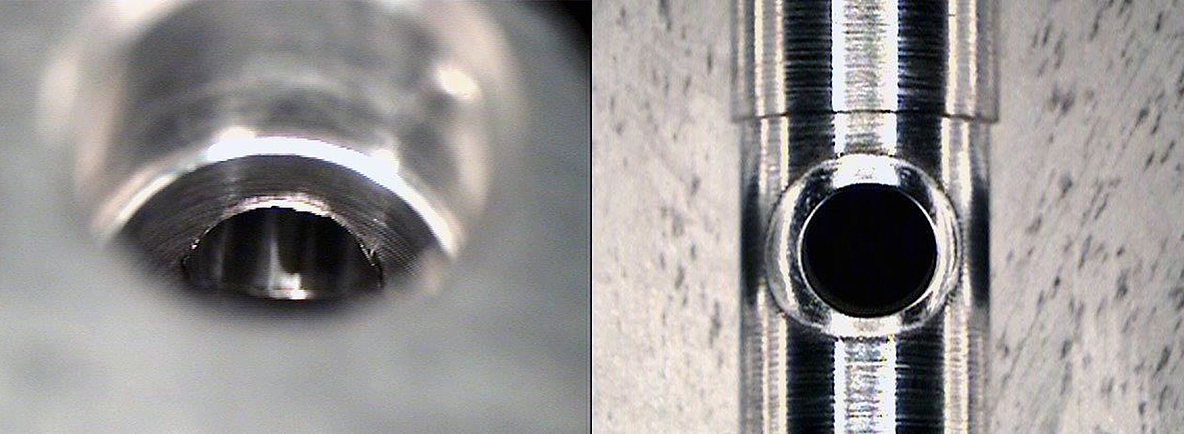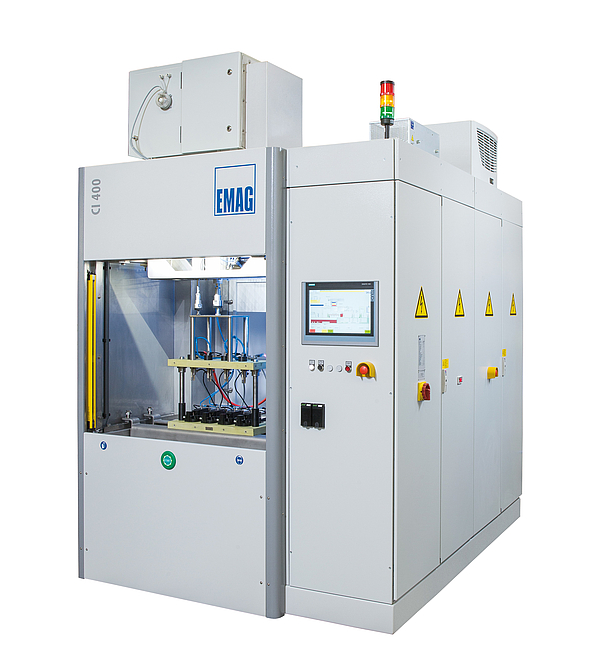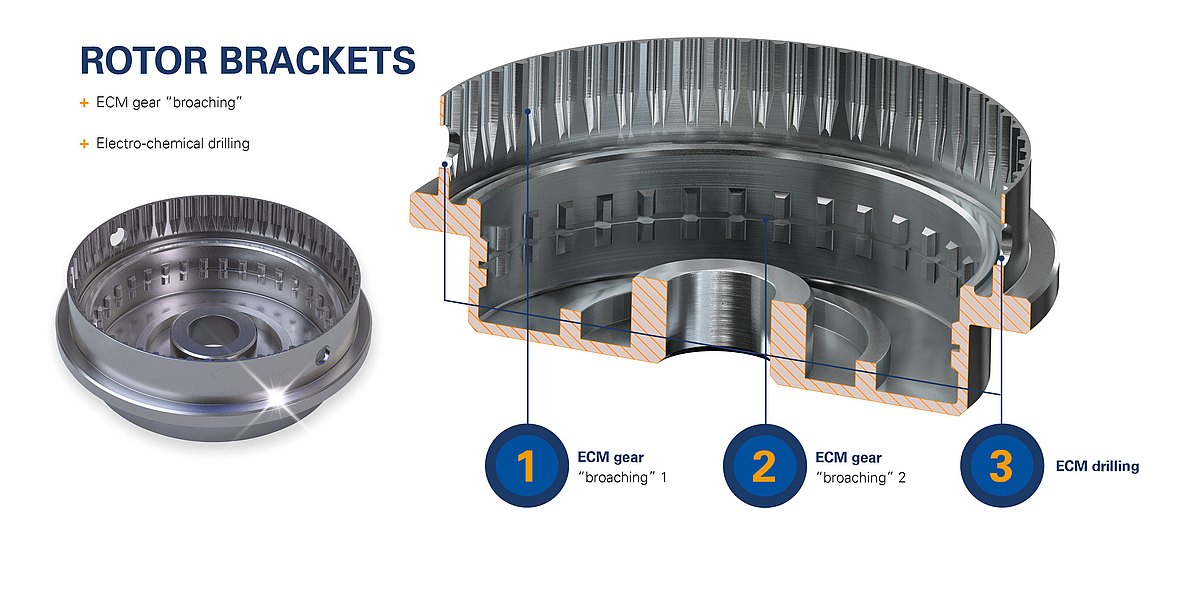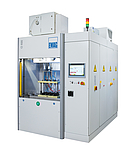09/14/2020 - Oliver Hagenlocher - Press
The CI machine from EMAG ECM: A Highly Effective Solution for Deburring Complex Components
Autonomous steering and brake systems, hydro-pneumatic chassis, or radically improved gas mileage – these buzzwords represent a technological change that is triggering a domino effect in the automotive and other industries. An increasing number of components have to satisfy extremely demanding quality requirements. They need to leave the production process in perfect condition and without any defects. If not, the autonomous brake system of a car might fail in crucial moments. Deburring plays a critical role in ensuring this doesn’t happen. The required degree of precision is ensured by a process called electro-chemical machining (ECM). Currently, many planners are looking for lean production systems to supersede traditional deburring processes. With this in mind, developers at EMAG ECM have extensively updated their CI series of machines: The new ECM CI machine ensures extremely fast and perfect electro-chemical processes for deburring and machining (“ECM cleaning”). It has also minimized installation space. Even complex parts such as pumps or hydraulic housings can be deburred quickly, without error, and in a reproducible manner using EMAG’s ECM technology. And with the new CI machine, users also receive an excellent value for their money.
Images
To understand the challenge posed by deburring, let’s take a look at complex components such as pump housings. These components often feature a veritable network of bore holes that hydraulic oil or fuel runs through at high pressure when the part is in use. Removing burrs is not an easy task, particularly when several holes intersect inside the housing. For some large hydraulic components in the aviation and utility vehicle industry, the manual deburring process may take an hour or more, and cost accordingly. “In addition, manual processes carry a risk of error,” emphasizes Richard Keller, executive manager at EMAG ECM. “If a burr is overlooked, it may come loose later during operation and restrict the flow. Considering the high safety standards in airplane or automobile production, this is not acceptable.” It is therefore no surprise that electr-chemical deburring has become established for many parts in recent years. Errors are basically eliminated, and the process speed is very high. Throughout the electro-chemical process, an electrolyte solution flows between the workpiece (the positive anode) and the tool (the negative cathode). Metal ions then detach themselves from the workpiece. The shape of the cathode or tool with the active, conductive surfaces is designed so that the removal of material from the workpiece results in the desired component contour. This not only yields the highest surface quality without thermal degradation of the workpiece structure, but also ensures completely uniform and reproducible results.
Proven Return on Investment
At the headquarters in Gaildorf near Schwäbisch Hall, Germany, EMAG’s ECM specialists continuously develop the process for applications involving new materials, component geometries, and quality requirements. The direction of the research is determined by the changing customer requirements all over the world. With its new CI series of machines, available since the spring 2017, EMAG ECM is now taking the next step: To conserve valuable space in the customer facilities, engineers at EMAG have revised the frame of the CI machine and optimized the size of the cabinet and the electrolyte management system. What is the driving force behind these and other changes? “Against the background of technological development, it is obvious that deburring and ECM cleaning, e.g. for workpieces that have already been hardened, is becoming more and more important. We wanted to develop a solution that fully guarantees the outstanding benefits of electro-chemical machining for users while ensuring reliable processes, at an extremely attractive price-performance ratio. This is exactly what the CI series of machines offers. We’ve lowered the cost of investment for customers with discounts for early adopters.” As a result, users reap the benefits of a flexible technology with consistently high-quality components. The cycle time can be adjusted precisely with scalable devices. Depending on the requirements, several components can be machined simultaneously in a single process, and the CI machine can be easily upgraded to a fully automatic system. All parameters of an ECM process are monitored and documented making them easier to reproduce. Last but not least, the CI machine requires only about 7.5 square meters (80 square feet) of installation space, including the filtration system – another cost saver.
The New Focus on E-mobility
EMAG ECM’s recent successes indicate that users are finding these benefits very convincing. The new CI machine is already in use at a North-American aerospace supplier and an Italian supplier for utility vehicle parts. In both cases, the deburring takes place on highly complex housings. Despite multiple holes in the component, cycle times are less than 60 seconds – a radical change compared with the previous time-consuming manual process. “The examples show that we are on the right track with our approach to development: We’ve been able to succeed against our national and international competition because our CI machine offers excellent performance at a low cost. The enormous cost pressure for our users necessitates the kind of effective engineering that we offer with our CI machine,” Keller explains. It appears that the cost-effectiveness argument is gaining more traction with users, as many components in electric and hybrid engines require ECM cleaning, drilling, and deburring processes that EMAG ECM is already able to offer effective solutions for. In addition, there is another point that should not be underestimated in the current discussion of CO2 footprints in automobile production. Compared to many alternative processes, electro-chemical machining is significantly faster. This saves tons of carbon dioxide – a fact that convinced the German Federal Ministry for the Environment: An EMAG ECM customer received an environmental innovation award for applying electro-chemical machining on an industrial scale. “This vindicates our commitment to this effective technology, which we plan to introduce to the wider market in the years to come. CI machines are perfect for this,” Keller concludes.
Contact

Oliver Hagenlocher
Area
Press and Communication









